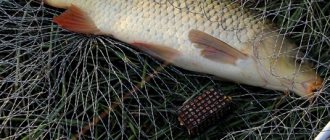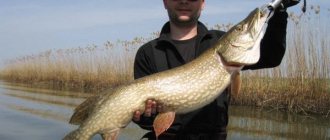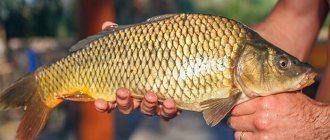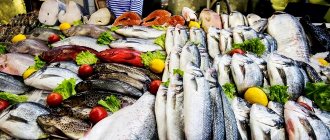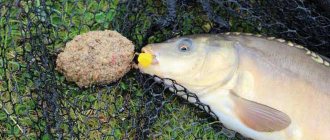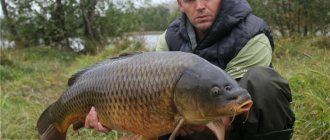The largest carp in the world
One of the most common and frequently encountered freshwater fish is the carp, which lives in almost all fresh water bodies. In Russia, carp began to be bred in the southern provinces at the behest of Emperor Peter the Great.
An elongated thick body, a large mouth with antennae, a dark back and golden-brown, sometimes gray sides, shimmering with gold or copper - this is the appearance of a fish that every true fishing enthusiast will recognize - this is the carp. Living in rivers, the carp prefers a clay or muddy bottom and likes to settle in places with different depths. In reservoirs it chooses thickets of water chestnuts or water lilies, and coastal areas overgrown with reeds. It feeds mainly at night in muddy backwaters overgrown with vegetation. It spawns in the spring-summer period, at a water temperature of at least 170 C, laying eggs in thickets of aquatic plants growing near the shore. Not picky about food, carp can feed on both plant and protein foods (mollusks, insect larvae).
The cultural “brother” of the carp, the carp, is distinguished by the fact that it can live even in stagnant or low-flowing reservoirs. This unpretentious fish, being a lover of heat, grows and fattens best in reservoirs with temperatures from 20 to 28 degrees Celsius. Ponds, flooded quarries and rice paddies are used to grow carp. Rapid growth under favorable conditions allows you to get fish weighing up to 800 grams at the end of the second year of life, and the maximum weight can be over 10 kg.

New breeds of carp were created in the monastery ponds of Europe back in the Middle Ages. And the first mention of carp is in the orders of the German minister Cassiodorus, under King Theodoric (456-526 AD). The carps from the ponds of Pontchartrain were one hundred and fifty years old, as evidenced by Buffon, and the Charlottenburg (near Berlin) carp individuals were more than two hundred years old. The famous writer, hunter and fisherman Sabaneev suggested back in 1911 that the carps that are found on appanage estates near St. Petersburg, as well as in the ponds of Polish magnates, can also be a hundred years old or more. According to the scientist-encyclopedist Palass, even 100 years ago, carp more than one and a half meters long were found in the Caspian Sea.
In the early 1880s, a large carp weighing 69.6 kg (4 poods 10 lbs) was caught in the Voronezh River of Lebedyansky district with a seine; this information was conveyed by eyewitnesses to A.A. Beer. - Moscow hunter and fisherman.
It is generally accepted that fixed records begin in 1981, when fisherman Marcel Vouviers caught a mirror carp weighing 37 kg on the Joun River.
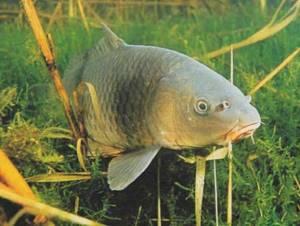
The most famous modern records are famous for a fisherman from Liverpool, who in October 2006 caught a fish weighing over 38 kg in Gravier Lake. In November of the same 2006, Gary Hages surpassed his own catch record in Rainbow Lake, catching a mirror carp weighing 39.5 kg. A new world record for extracting the longest and thickest fish of the mirror carp breed from the water was set by Graham Slaughter. After 20 minutes of struggle, a fish weighing 40.09 kg was delivered to the shore directly in the landing net; the length of this fish was 1 meter 20 centimeters. But this modern world record was surpassed in October 2008, when London airport employee Andre Komornicki caught a carp weighing 41.3 kilograms.
It is known that the largest carp in the world weighed one hundred and twenty kilograms, and pulling a carcass of that size out of the water was probably very difficult. But not only Europe and Asia are famous for their giant carp and carp. Far Eastern carp (koi fish, beloved and celebrated by the Japanese) participate in prestigious Japanese koi shows, the champion of these shows from 1976 to 1980 had a length of 76 centimeters. In 1982, this carp was bought for 17 million yen. In the spring of 1986 it was sold to the owner of the Kent County Koey Center for a price that remained a secret. Unfortunately, after 5 months, the 15-year-old fish died.
Carp and carp are stomachless fish that do not have digestive glands; they feed without interruption, eating crustaceans, mollusks, mosquito and insect larvae, fry - rapidly gaining weight, with a sufficient food supply. Due to the delicate taste of their meat, carp and its relative carp are considered one of the best river fish. This fish gains commercial weight quite quickly, the benefits of breeding for food needs, taking into account the beneficial properties, are obvious. Carp meat contains sodium, potassium, phosphorus, magnesium, and iron. Scientists have proven that iron deficiency anemia does not occur with sufficient fish consumption.
Search for Sazan | Choosing the Right Fishing Point
Favorite Habitat of Carp, near river beds with the presence of snags, grass, various Obstacles and Shelters on the bottom of aquatic vegetation.
Therefore, before you go fishing for carp, you need to stock up in sufficient quantities:
Feeders;
Cargo;
Equipment;
And other various accessories for Catching Carp.
It is worth choosing a point for catching carp as far as possible from the Shore. This is especially true for large Rivers, where it is impossible to lure Carp close to the shore by any means.
Carp is a shy fish, and the older and bigger it is, the more shy it is. When participating in Carp Fishing competitions, those who fish from the Farthest Distances are often in the lead.
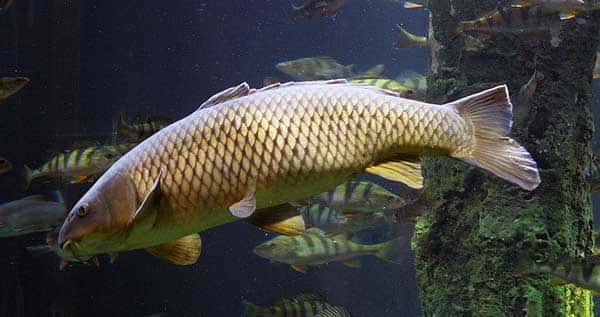
3 ways to improve your fish bite!
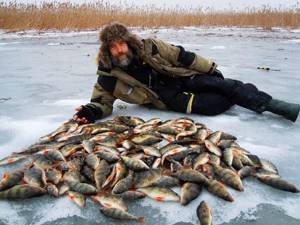
Over 15 years of active fishing, I have found many ways to improve the bite, and here are the most effective:
1. Bite activator . This pheromone additive attracts fish most strongly in cold and warm water. The Fish Hungry bite activator has proven itself to be excellent - Read more…
2. Tackle with increased sensitivity . You should first familiarize yourself with the features of using a particular type.
3. Pheromone baits . They attract the attention of fish, stimulate hunger and cause a schooling reflex, which allows you to collect a lot of fish in one place.
You can get the rest of the secrets of successful fishing for free by reading my other materials on the site.
3 ways to improve your fish bite!
Over 15 years of active fishing, I have found many ways to improve the bite, and here are the most effective:
1. Bite activator . This pheromone additive attracts fish most strongly in cold and warm water. The Fish Hungry bite activator has proven itself to be excellent - Read more…
2. Tackle with increased sensitivity . You should first familiarize yourself with the features of using a particular type.
3. Pheromone baits . They attract the attention of fish, stimulate hunger and cause a schooling reflex, which allows you to collect a lot of fish in one place.
You can get the rest of the secrets of successful fishing for free by reading my other materials on the site.
The largest carp in the world. Where it was caught, its size and interesting facts about the fish.
A carp that every fisherman wants to catch. The desire to catch a big, trophy carp visits every angler who goes carp fishing. Entire competitions and carp fishing tournaments are held all over the world. People spend years preparing for such competitions and study carp throughout their lives.
In this article I will write some interesting facts about carp and where the world record holder was caught.
Read to the end and you will find out everything. Subscribe to the channel and look at other channel articles. The channel has published more than 100 interesting articles from the world of fishing and everything related to it .
What kind of fish and where does it live?
Carp is a fish from the carp family, however, it exceeds it in size and muscle mass. The distinctive features of the fish are: a large elongated body, a large head, two pairs of mustaches, and golden eyes. The body is covered with golden, smooth scales. The color of the back is light, the scales on the sides are darker. The color of the fins ranges from red to purple.
The fish grows throughout 8 years of its life and reaches 60-70 cm in length. The average weight of an individual is 1.5-4 kg, however, cases of catching individuals weighing 15 kg have been recorded. and more. Representatives of this species lead a sedentary lifestyle, occupying one territory throughout their lives. They choose regions with fresh water and slow currents.
Carp feel very comfortable in stagnant water with a muddy bottom. They love well-warmed water, do not feel comfortable in cool weather, and do not like strong winds.

Interesting facts about carp.
- Due to its low calorie content, carp meat is often included in the diets of people with diabetes.
- There are 4,424 carp-like fish species in the world. If we take it as a percentage of all bony fish in the world, then this amounts to 15% of all fish.
- Carp eat only what it likes. When the fish sucks in the food, it spits most of it back and chooses what it liked. As a rule, the carp spits back most of the food.
- Carp is a smart fish, no matter how strange it may sound. He has a good memory for a fish. Carp may refuse their favorite food if it has been caught on it. This fact has been proven by scientists.
- In 1711, a carp weighing 69.7 kg was caught, but there is no evidence of this.
- In the Moray River, which is located in Australia and is one of the most important rivers on the mainland, carp occupies 80% of the total mass of fish in the river.
The largest carp in the world
The current record holder was caught in 2015 in Hungary. The weight of the carp was 48 kg. He was caught on one of the commercial reservoirs. Only large carp are immediately and purposefully released into this body of water. You can fish there only with club cards. The cost of fishing is more than 1,500 Euros per week.
But in my opinion, this is not quite a record. You could say it's like fishing in an aquarium. As to whether such a capture can be considered a record, I ask you to share your opinion in the comments. Also tell me what is the biggest carp you have caught in your life.
For me the record was in France. There, also in 2015, a carp was caught, smaller than 44 kg in size on Lake Der Chantekok. The lake is public and no one specifically keeps or raises giant fish there.
Carp from Lake Euro Aqua in Hungary. Weight 46 kg

He fell just two kilograms short of the world record, but still became famous among fishermen all over the world. His capture was more surprising even than the world records. Only members can access the Euro Aqua club The price for a week's fishing will cost those who want to try their luck in catching a large fish 1,600 euros. In 2012, the carp caught broke all records with a weight of 46 kilograms.
The largest carp caught in the world and in Russia
Carp is a freshwater schooling fish of the Cyprinidae family. There are two forms of this fish - residential and semi-anadromous. The first lives permanently in one body of water, the second can live in lakes and freshwater areas of the sea, migrating to rivers during the spawning period. Both species have a relatively long, sometimes tall body, covered with unusually large dark golden scales. Fishermen around the world continually compete to see who can catch the biggest trophy. The record catches of the “river king” in Russia and in the world will be discussed in the article.
Maximum weight and length of an adult carp
Carp lives approximately 30–35 years. However, its growth stops after approximately the first eight years of life. By this time, the fish can reach quite substantial dimensions: the body length of an adult specimen usually reaches 1 meter and weighs a little more than 20 kilograms.
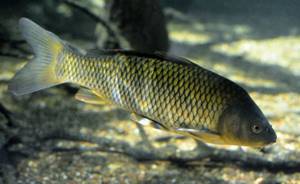
The standard length of the golden beauty is 50–70 cm and weighs 4–6 kg. If we consider the dynamics of growth over the years, then at the age of 2 years his body increases to approximately 10 cm with a mass of 25–30 g. In a favorable habitat, at the age of 3 years he will already weigh 450–500 g, and by the fourth year (with the onset of puberty) weight will be 2 kg.
The largest carp caught in the world
This species of fish lives in a wild river, where there is often a shortage of food supplies. In addition, not only single amateurs, but also fishermen began to catch it uncontrollably. The listed factors do not give marine life the opportunity to achieve the same impressive dimensions as carp.

When fishing with float gear, the largest catch can be a fish weighing only 1–2 kg. A larger specimen is taken on a special carp rig, which allows fishing at a considerable distance from the coast.
The largest carp caught a fishing rod in 1937 in Belgium on Lake Ostend. The fishermen then caught the coveted trophy weighing as much as 190 kg. The length of the giant fish was 3.5 m. At the time of capture, this giant also turned out to be of considerable age - he was about 30 years old. Given his advanced age and illness, the “river king” offered almost no resistance. To this day, it is considered the largest carp caught in the world. After being caught, the fish lived for another 9 years, swimming in a specially equipped pool.
What to fish with
Carp, as a heat-loving fish, begins to become active in the spring, when the ice melts. Here comes a favorable period for fishing until spawning begins (early June). In summer, the fish are not very active; there is a chance to catch it only in the dark. In autumn, the fish begins to store fat and the fishing season begins again. The favorable fishing period at this time is the entire period from morning to evening. In winter, you shouldn’t hope for big catches; fish are least active during this period.
The choice of bait for fishing directly depends on the season. While the water is cold, the fish prefers animal food - mollusks, beetle larvae, earthworms. With the onset of summer heat, carp prefers plant foods - boiled corn, potatoes, peas. You can also prepare bait from boiled millet and cake. The fish really like the smell of the resulting dish.
Since the fish is quite strong and stubborn, you should take the issue of choosing gear seriously.
The optimal rod would be 3-4 meters long with 100 grams of dough. It will be the most convenient for fishing, so the price-quality parameters should be taken into account. You will need a high-power reel with a capacity of 4500 and a number of bearings - 5. A fishing line of 0.25-0.35 mm will be enough, choose a durable one, but not made of rough material. There are special carp hooks in sizes No. 2-8 in stores; you should choose a reliable company: Gamakatsu, Cobra. Take a sinker in the range of 50-250 g, the main thing is that the bait is not carried away by the current.
What is the largest carp caught in Russia
In Russia, the record carp was caught towards the end of the 18th century on the Voronezh River in Lebedyansky district. The individual had a mass of 69.6 kg with a length of 1 m and a width of 70 cm. The fish was caught not on an amateur fishing rod, but in a commercial seine. Information about the largest catch is not absolutely reliable, since it was transmitted to the Moscow Society of Hunters and Fishermen by ordinary eyewitnesses.
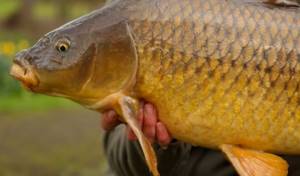
Ranking of record trophies
Carp is a domesticated form of carp that lives exclusively in stagnant bodies of water. In cultural fisheries, this fish can grow to enormous sizes. In recent years, fishermen have increasingly come across trophy specimens.
Captures of record-breaking individuals have become more frequent for the following reasons:
- optimal conditions for the rapid growth of pets began to be created in fisheries;
- modern fish feeds ensure the fastest growth of underwater inhabitants;
- The fishing principle of “catch and release!” has become very popular.
Today, the record is the fish caught in the spring of 2015 at one of the Hungarian fish farms. The largest carp caught with sports gear weighs 48 kg. For the reservoir where this fish was caught, the capture of large specimens is not uncommon. The fact is that carp of considerable size are initially released into this lake.
Second place in the ranking is occupied by a giant from the French lake Den Chantecoq. He was caught in the fall of 2015 and fell just short of the current world record. Its weight is 44.5 kg. The special value of this trophy lies in the fact that it was caught not in a commercial reservoir, but in a public one. Now this fish is considered the largest of those caught on public lakes.
Third place went to a German fish named Mary. This carp has been caught by carp anglers more than once and even managed to become one of the world leaders. When last caught, its weight was just over 40 kg. Unfortunately, in the summer of 2012 this individual died.
The fourth position is occupied by a trophy living in the French Rainbow Lake. He has also been caught many times. At the time of his last capture he weighed 41 kg. In 2009, the fish managed to rise to first place in the world carp fishing rankings, but this record was quickly broken by the already mentioned Mary.
In fifth place is a fish that was caught in 2010 on the same Rainbow Lake. It is interesting to note that this specimen pecked at negative air temperatures. This is not typical for heat-loving carp. This giant weighed 42 kg and held first place for a long time.
The sixth position went to a specimen caught in a commercial reservoir in Hungary in 2012. At that time it was the largest carp, weighing 46 kg.
In seventh place is a giant from the French lake Les Graviers named Scar. He received the title of the largest carp in 2010. When first captured, his weight was about 39 kg. When he was last caught, he weighed more than 44 kg. A notable feature of this individual is the scar on its right side.
Eighth place goes to a trophy from the already famous Rainbow Lake. The mirror carp caught in this reservoir in 2021 weighed almost 40 kg.
The ninth position went to an individual nicknamed “Neptune”, which weighed 38.2 kg. This specimen was caught only three times by carp anglers on one of the public reservoirs in France.
The giant from Abbey Lake rounds out the top ten. This carp has found itself on the shore more than once. In 2012, it was caught by a Dutch girl named Lisette Benders, which allowed her to become the female record holder. At that time, the caught specimen weighed 38 kg. Today her weight is 44 kg.
Recently, information appeared that the largest carp in the world was caught by a Chinese fisherman in the vicinity of Hong Kong. According to information available on the Internet, the mass of the fish was 120 kg. Upon closer inspection, it turned out that this fish was not a carp, but a giant barbel, also belonging to the carp family.
Giant from Lac du Der-Chantecoq lake in France. Weight 44 kg
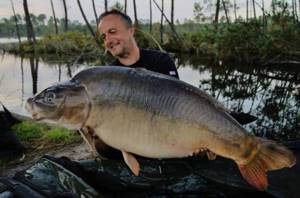
The lake is an amazing place where there is a huge number of unique species of fauna. The area of the lake is as much as 4,800 hectares. 75,000 cranes stop here on their way south. This lake is a public lake where almost everyone fishes.
From a bird's eye view, the lake looks incredibly beautiful and attracts crowds of tourists not only for fishing, but also just for relaxation. The largest carp weighed 44 kilograms and was caught in October 2015. He fell just short of the world record.
Maximum size of carp
Carp lives in “wild” rivers, where there is often a shortage of food supply. In addition, this fish is caught uncontrollably not only by amateur fishermen, but also by commercial fishermen. These circumstances do not allow carp to grow to the same impressive size as carp.
When fishing with a float rod, the fisherman's trophies are carp weighing 1–2 kg. Larger specimens are caught on specialized carp gear, which allows fishing at a considerable distance from the shore.
In the same year, in the city of Dnepropetrovsk, they managed to catch an individual whose weight was slightly less than 25 kg. Both fish were caught using classic bottom tackle.
The largest carp in the world was caught at the end of the eighteenth century on the Voronezh River in Lebedyansky district. He weighed 69.6 kg. It should be noted that for catching it, not amateur gear was used, but a commercial seine. Information about the record catch was passed on by eyewitnesses to the Moscow Society of Hunters and Fishermen.
Eric's Common carp from Lake Rainbow in France. Weight 41 kg

This fish lasted in the leading position for only two weeks. It has been caught several times at Lake Rainbow in France. Eric's Common carp lost to Mary by only 450 grams. All the local fishermen of the lake knew this fish and were very proud of its capture.
Due to its weight, this fish, like many others, did not always withstand fishing rods, which could affect the failure of fishing. But some fishermen still managed to catch it. Among the fishermen there was a dream to catch him; for them it was an indicator of skill and experience.
Record copies
Catfish is one of the giant centenarians that can surprise you with its size and age. Determining its maximum possible size is very difficult, because in addition to documented reports of capture, there are many more unconfirmed ones. There are many references in historical archives to the capture of giant Sheatfish from the 19th century, which are more like fairy tales, but may well be true. Listed below are documented giant catfish of various varieties.
The largest channel Catfish caught was 1m 30cm long and weighed 26kg. There are relatively few unconfirmed reports of catching this species, so this fish probably does not reach large sizes. Blue Sheatfish are considered larger. The largest representative of this species in the world had a length of 1 m 70 cm and a weight of 45 kg. There is also information about unprecedented specimens that were caught in the 19th century. If you believe such reports, the weight of the largest blue catfish reached 68 kg. It is difficult to say how true this information is, but we can assume that a length of 1 m 70 cm is not the limit for this type of fish. The length of the largest flathead catfish was 1 m 55 cm, and it weighed 56 kg.
To date, there is no confirmed data on the capture of larger specimens, and we can conclude that the above figures correspond to the maximum sizes.
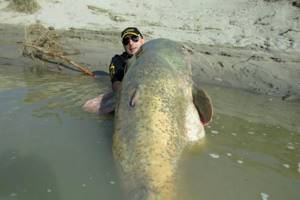
The common, or river, catfish is much larger in size compared to other species. This is exactly the type of Catfish that has lived in Russia for centuries. It is considered the largest in the world. These days, the largest fish caught usually weigh no more than 90 kg. There is confirmed information that the largest catch in the world is a specimen weighing 300 kg and 5 m long. According to unconfirmed records from the 19th century, the largest catfish in Russia reached 6 m in length, and its maximum weight was 350 kg. However, no evidence was found that the record catfish could reach 400 kg.
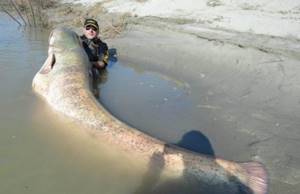
The Stiletto Catfish is another giant species that reaches 3m in length. The largest representative of this species weighed 350 kg, which makes it an absolute record holder in terms of weight, although it is inferior in size to an ordinary catfish.
Although the Sheatfish is considered one of the largest bony fish, some varieties barely reach a maximum length of 12 cm. However, they become sexually mature at 1 cm in length.
Myths and legends associated with catfish
Raising a giant specimen in captivity is very difficult. The main problem is that catfish gain weight slowly, and it can take many years to reach record sizes. Additionally, wild varieties generally do not grow well in captivity, much like aquarium fish do not do well in the wild.
The huge difference between official data and historical chronicles greatly complicates the task of determining the maximum possible size of catfish. But we can assume that a length of 5 m is not the limit for such a fish. A catfish can only pull 300 kg if its age is several decades. This is the largest fish living in fresh water. For comparison, the largest carp in the world, according to L.P. Sabaneev, weighs only 70 kg. This fish is very strong, but is significantly smaller in size than Catfish. The largest silver carp was caught in 2015 on the Dnieper River. His weight was 50 kg. As you can see from these examples, the largest fish caught from other freshwater species cannot compete with Sheatfish.
This fish can indeed pose a danger to human health, but the problem is not at all that the 300-kilogram catfish preys on people. Some varieties of this fish may have sharp spines on their fins. These thorns are not poisonous, but they must be handled with extreme caution.
Descriptions of cases when a huge river monster attacked a waterfowl do not resemble the truth, since the catfish actively hunts at night, and in the daytime behaves more calmly and prefers not to leave deep holes. These attacks are most likely associated with the activity of large pike (after all, it is not without reason that it is popularly nicknamed “duckling”).
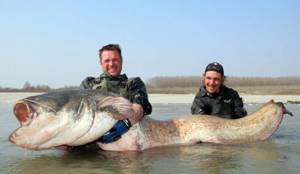
The legend about the huge mutant Catfish, weighing three hundred kilograms and living in the exclusion zone around the Chernobyl nuclear power plant, deserves special mention. There really is a giant catfish that no one is trying to catch, but its size has nothing to do with radiation exposure. This can be explained by the fact that the Pripyat River has become a kind of reserve for fish, free from the invasion of fishermen and poachers.
